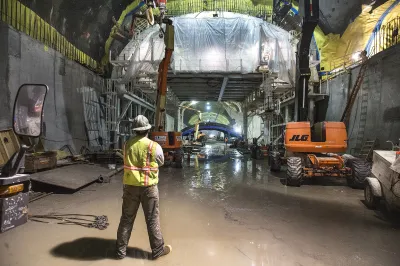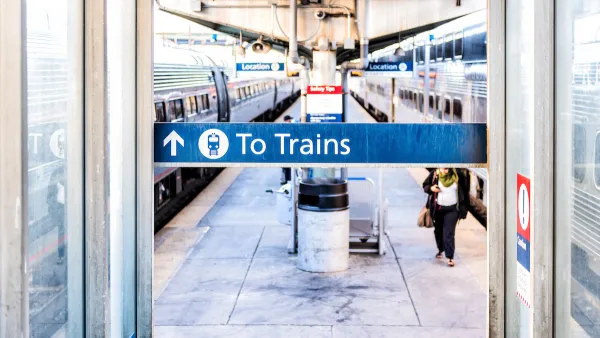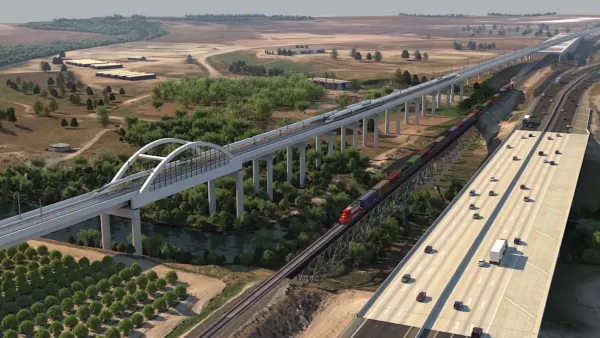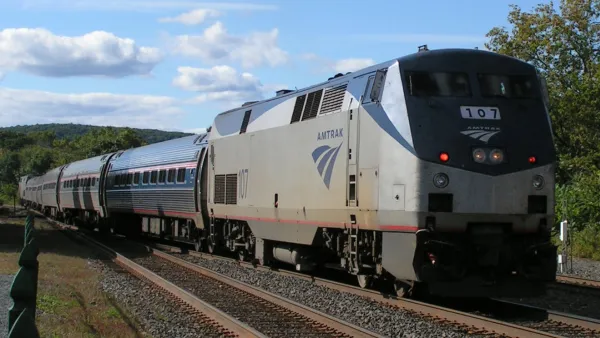Most major infrastructure projects fail to meet projected timelines or budgets. Some experts say this is a structural flaw built into "systematically deceptive" estimate practices.

California's High-Speed Rail. New York's East Side Access extension. Honolulu's light rail line. Ralph Vartabedian describes some of the infrastructure megaprojects that have run up against "cost overruns, engineering challenges and political obstacles that have made it all but impossible to complete a major, multibillion-dollar infrastructure project in the United States on budget and on schedule over the past decade." These persistent delays and cost overruns, writes Vartabedian, make it seem unlikely that the $1.2 trillion in new infrastructure promised by the Build Back Better bill will be completed anytime soon.
The $1.2 trillion package has bold goals, directing the majority of $500 billion to highways, $39 billion to urban transit, $65 billion to broadband projects and $73 billion to electrical grids, among other items. The nation’s busiest passenger rail line, Amtrak’s Boston-to-Washington corridor, would get the biggest slice of a $66 billion rail package. The infrastructure spending plan is unlikely to rescue some existing infrastructure projects that are bogged down with problems.
The ambitious timetable is hindered by sharply rising materials costs, shortages of skilled labor, and other supply chain factors, says Vartabedian. And this isn't a problem unique to the U.S.: an Oxford study of dozens of international projects found that 92 percent of them went over time and budget, pointing to "systematically and significantly deceptive" cost estimates.
In fact, experts argue that budget and time estimates are often flawed from the start. Former San Francisco mayor Willie Brown said the quiet part out loud in a 2013 newspaper column, calling the first budget for infrastructure projects "a down payment": "If people knew the real cost from the start, nothing would ever be approved. The idea is to get going."
FULL STORY: Years of Delays, Billions in Overruns: The Dismal History of Big Infrastructure

National Parks Layoffs Will Cause Communities to Lose Billions
Thousands of essential park workers were laid off this week, just before the busy spring break season.

Retro-silient?: America’s First “Eco-burb,” The Woodlands Turns 50
A master-planned community north of Houston offers lessons on green infrastructure and resilient design, but falls short of its founder’s lofty affordability and walkability goals.

Delivering for America Plan Will Downgrade Mail Service in at Least 49.5 Percent of Zip Codes
Republican and Democrat lawmakers criticize the plan for its disproportionate negative impact on rural communities.

Test News Post 1
This is a summary

Test News Headline 46
Test for the image on the front page.

Balancing Bombs and Butterflies: How the National Guard Protects a Rare Species
The National Guard at Fort Indiantown Gap uses GIS technology and land management strategies to balance military training with conservation efforts, ensuring the survival of the rare eastern regal fritillary butterfly.
Urban Design for Planners 1: Software Tools
This six-course series explores essential urban design concepts using open source software and equips planners with the tools they need to participate fully in the urban design process.
Planning for Universal Design
Learn the tools for implementing Universal Design in planning regulations.
EMC Planning Group, Inc.
Planetizen
Planetizen
Mpact (formerly Rail~Volution)
Great Falls Development Authority, Inc.
HUDs Office of Policy Development and Research
NYU Wagner Graduate School of Public Service





























